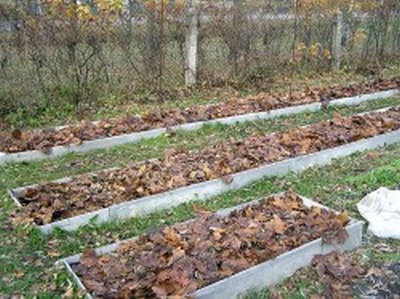This page contains videos in which the authors tell in detail and show how to properly cover clematis for the winter. The easiest way is to cover clematis that bloom on young shoots that grow in the spring. There is no need to preserve such vines in winter; they are cut into three or four buds and the base of the bush is covered with them.Before sheltering, it is advisable to fill the bush with one or two buckets of humus so that a mound is formed in the root zone and water does not collect there during thaws. 
How to cover clematis for the winter video:
In the previous video, they advise twisting clematis into a ring to make it easier to cover. This is not exactly good advice. Clematis shoots are very fragile and break easily. Many vines break while being removed from the support, and if you start to twist them into a ring, then there will be even more broken ones. It is better to carefully remove the shoots from the trellis and place them without twisting them; not much more covering material will be used, and the plant will be less injured.
How to properly trim and cover clematis for the winter video:
We bring to your attention another video clip. However, there are no fundamental differences between them. The shelter should not be excessive, the place where the bush is located should not be flooded with water, and if you notice mouse tracks in winter, immediately spread the poison.
There is no need to rush into shelter; it is advisable to start using it when it starts to freeze a little. You just need to prepare everything in advance, trim the clematis, lay it on the ground and prepare the covering material. You can read more about preparing clematis for winter in this article.
Preparing a winter shelter for clematis video:
Another tip - do not cover plants with cellophane. If you do this, be sure to provide good ventilation under the film, otherwise all the shoots may be trampled.In addition, under the film on a sunny day the temperature begins to rise and at night to fall. Such changes will not lead to anything good, so the cellophane cover must also be shaded.

 CUCUMBERS NEVER GET SICK, I'VE BEEN USING ONLY THIS FOR 40 YEARS! I SHARE A SECRET WITH YOU, CUCUMBERS ARE LIKE THE PICTURE!
CUCUMBERS NEVER GET SICK, I'VE BEEN USING ONLY THIS FOR 40 YEARS! I SHARE A SECRET WITH YOU, CUCUMBERS ARE LIKE THE PICTURE! You can dig a bucket of potatoes from each bush. Do you think these are fairy tales? Watch the video
You can dig a bucket of potatoes from each bush. Do you think these are fairy tales? Watch the video
 How our fellow gardeners work in Korea. There is a lot to learn and just fun to watch.
How our fellow gardeners work in Korea. There is a lot to learn and just fun to watch. Eye trainer. The author claims that with daily viewing, vision is restored. They don't charge money for views.
Eye trainer. The author claims that with daily viewing, vision is restored. They don't charge money for views. A 3-ingredient cake recipe in 30 minutes is better than Napoleon. Simple and very tasty.
A 3-ingredient cake recipe in 30 minutes is better than Napoleon. Simple and very tasty. Therapeutic exercises for cervical osteochondrosis. A complete set of exercises.
Therapeutic exercises for cervical osteochondrosis. A complete set of exercises. Which indoor plants match your zodiac sign?
Which indoor plants match your zodiac sign? What about them? Excursion to German dachas.
What about them? Excursion to German dachas.
This group includes clematis that bloom on last year's shoots. which means their lashes must be preserved in winter. When choosing clematis from this group, pay attention to their winter hardiness.